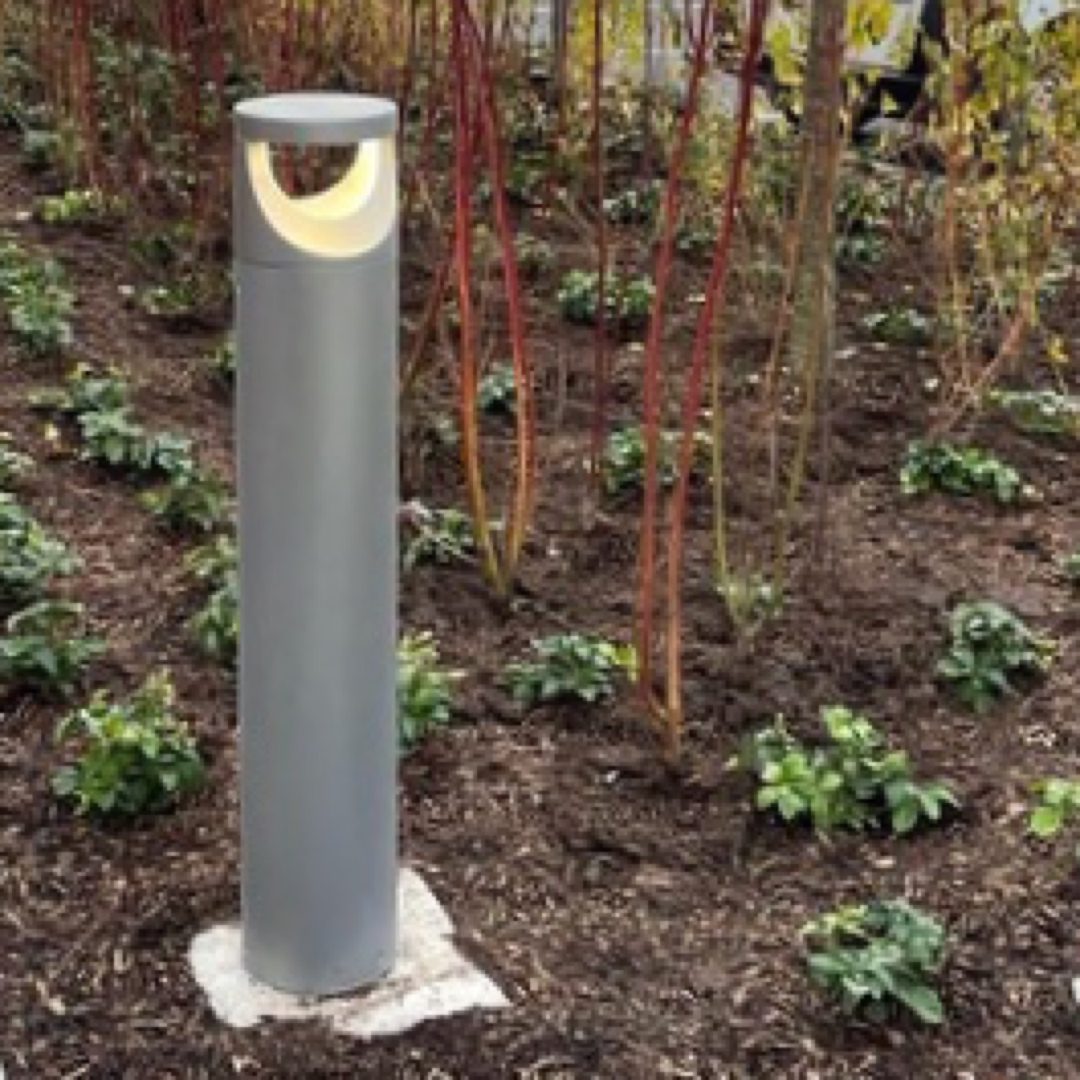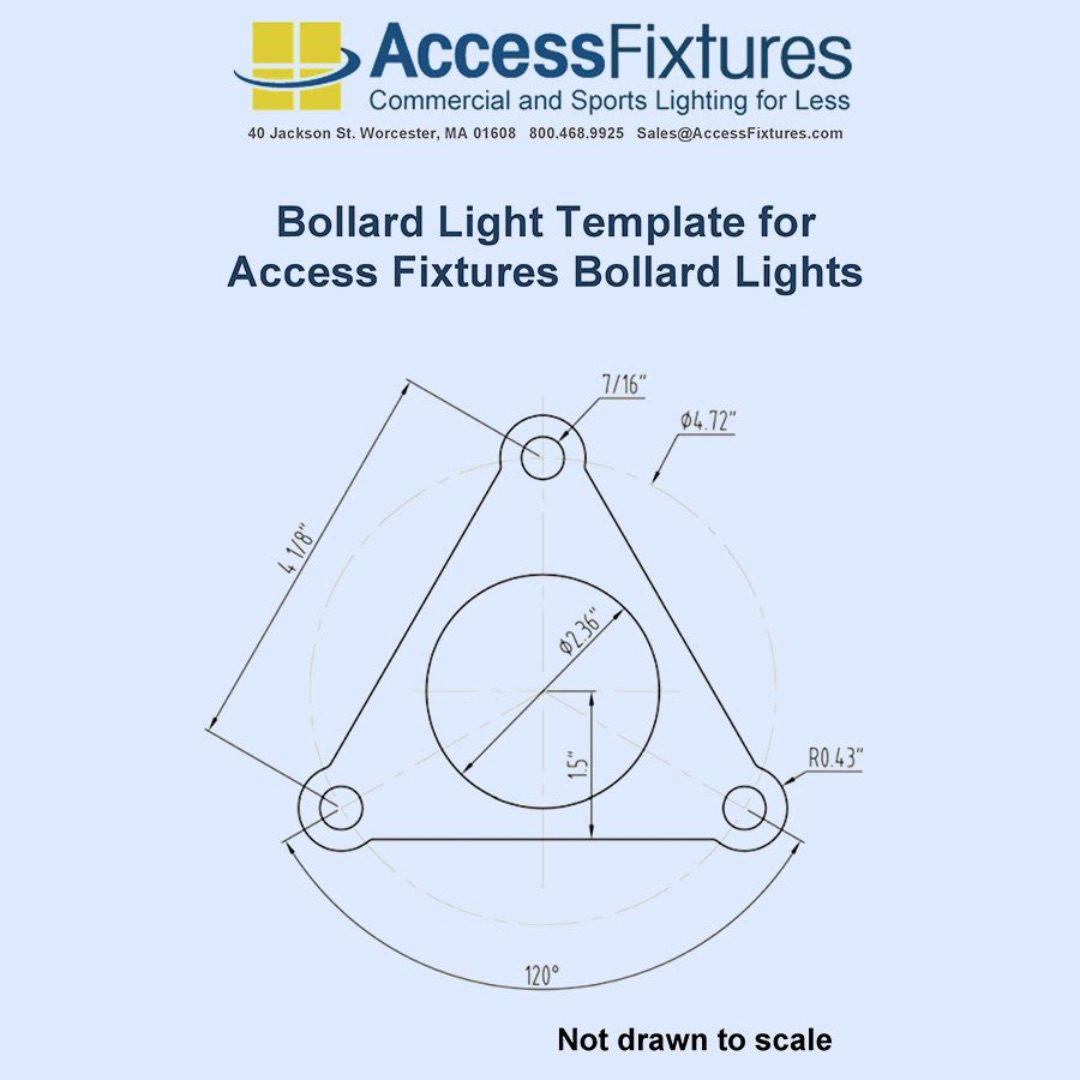LED Bollard light posts are a staple in modern landscape design, offering aesthetic appeal and functional lighting for walkways, gardens, and security areas. Whether the choice was bollard landscape lights, or architectural bollard light fixtures, choosing the right approach is vital for ensuring longevity and effectiveness when installing or replacing. Despite aluminum bollard finishes, die-cast aluminum, a brass bollard, or steel bollard, proper installation is key. This article provides a detailed guide on optimizing the installation of a bollard light post, drawing from a practical example at Mississippi State University (MSU), where a damaged bollard light post was efficiently replaced.
Key Takeaways
-
-
Flexible Installation Options: Installing new LED bollard light posts can be efficiently managed without the need for fresh cement, using mechanical anchors such as Strong-Tie Strong-Bolt 2 or Red Head anchors. This approach offers a practical and cost-effective alternative, ensuring strong and durable mounting on existing cement surfaces.
-
Importance of Proper Installation Techniques: Ensuring that bollard light posts are properly leveled during installation is crucial for both aesthetic and functional purposes. Most Access Fixtures bollard lights come with built-in levels, aiding in precise installation which is essential for optimal performance and longevity of the light posts.
-
Consultation and Adherence to Guidelines: Like Mississippi State University’s approach, consulting with lighting specialists and closely following provided installation guidelines are vital steps. These ensure that the installation process addresses any site-specific challenges and complies with safety standards, leading to successful and secure bollard light setups.
-
Someone running over one of your bollard lights with their car necessitates immediate action! This recently happened at Mississippi State University, resulting in the demolition of a LED bollard light.
Whether an overly enthusiastic (and consequently distracted) Mississippi State Bulldogs fan or a rival fan seeking revenge caused the incident, the university still needed a replacement for the bollard light.
The university chose an Access Fixtures bollard light because it matched the style of their remaining bollards. MSU opted not to replace all the bollard lights or the cement to which the demolished bollard light was attached.
After placing the order, the MSU facilities manager consulted an Access Fixtures lighting specialist on installing the new bollard light without pouring new cement for the anchor bolts.
LED Bollard Light Installation With Anchor Bolts
When replacing an old or broken outdoor bollard light with a new one, the wiring from the existing fixture may still be good. However, it is unlikely that the old bolts will fit the pattern of the new fixture, even if a mounting bolt or two may still work.
For optimal setup sinking new mounting bolts in fresh cement is always recommended. However, sometimes it may be too expensive or logistically challenging to install new bollards in this manner.
In such cases, when the need arises to install new bollard lights without pouring new cement mechanical anchors can be a viable solution. Anchors such as Strong-Tie Strong-Bolt 2 or Red Head anchors from Trubolt can be utilized to mount new bollard lights onto existing cement.
Once you follow the instructions and install and set up your bollard lamp, you’re all set!
Access Fixtures bollard lights are designed to accommodate 3/8″ diameter bolts. Be sure to select the appropriate length for your specific requirements. When installing bollard lights, ensure the base or fixing plate on every fixture is leveled.
Access Fixtures bollard light bases come with built-in levels, making installation easy; the result will be determined by the quality of the installer’s work.
Installation Techniques Without New Cement
Traditionally, installing new bollard light posts involves embedding mounting bolts in fresh cement. However, this method can be costly and complex. An alternative method used by MSU involves:
- Utilizing Mechanical Anchors: MSU opted for mechanical anchors to secure the new bollard light post to the existing cement, avoiding the need for new cement. This method is effective and less disruptive, using products like Strong-Tie Strong-Bolt 2 or Red Head anchors from Trubolt.
- Site Preparation: Ensure the site’s existing wiring is functional and clear the area of any debris or damaged hardware before installation.
- Bollard Light Post Installation: It is crucial to follow the installation guidelines specific to the bollard light post being installed. For Access Fixtures bollard light posts, which are designed for 3/8″ diameter bolts, selecting the correct bolt length is essential for a secure fit.
- Leveling the Bollard Light Post: Most Access Fixtures bollard light posts include built-in levels to aid in achieving a perfectly vertical alignment, which is key for both looks and performance.
Installation Best Practices
- Evaluate Existing Infrastructure: Before installation, assess the condition of the existing infrastructure, such as wiring and cement bases.
- Expert Consultation: Like MSU, consulting with lighting specialists can provide valuable insights and help troubleshoot any potential issues.
- Adherence to Guidelines: Always adhere to the manufacturer’s installation instructions to ensure the bollard light post is installed correctly and safely.
Conclusion
Replacing or installing a new bollard light post does not necessarily require extensive or expensive preparations. By employing innovative installation methods like mechanical anchors and adhering to a few key installation practices, you can efficiently and effectively manage the installation of bollard light posts. MSU’s experience serves as a model for managing bollard light post installations with minimal disruption and optimal results.
Frequently Asked Questions
Can you replace a bollard light without pouring new cement?
Yes, you can replace a bollard light post without pouring new cement by using mechanical anchors. This method involves securing the new bollard light to the existing cement, which is effective and less disruptive.
What type of anchors are recommended for installing bollard post lights without new cement?
For installations without new cement, Strong-Tie Strong-Bolt 2 or Red Head anchors from Trubolt are recommended. These mechanical anchors provide a strong and reliable hold in existing cement.
Is it necessary to replace the wiring when installing a new lighting bollard post?
Not necessarily. If the wiring from the existing bollard light fixture is still in good condition, it can be reused for the new installation. Always check the wiring’s integrity before proceeding.
How do you ensure the new bollard fixture is properly aligned and level?
Most bollard light posts, such as those from Access Fixtures, include built-in levels on their bases. Using these, you can ensure the post is perfectly vertical during installation, which is crucial for aesthetics and stability.
What should be considered when selecting bolts for bollard light post installation?
It’s important to select bolts that match the diameter required by the bollard light post—typically 3/8″ for many models. The length of the bolts should also be appropriate for the depth of the cement base and the fixture’s requirements.
What steps should be taken for site preparation before installing new bollard posts?
Before installation, clear the area of any debris or damaged hardware, and ensure that the existing wiring is functional. This preparation helps prevent issues during the installation process.
How do you handle bolt patterns that don’t match between the old and new bollard light posts?
If the bolt patterns do not match, using adaptable mechanical anchors can solve the issue as they do not require the new fixture to align exactly with the old bolt positions.
What are the best practices for a successful bollard light post installation?
Best practices include assessing the existing infrastructure (like wiring and cement bases), consulting with lighting specialists if necessary, and strictly adhering to the manufacturer’s installation guidelines to ensure the bollard light post is correctly and safely installed.
How long does it take to install an LED bollard light post using mechanical anchors?
The time can vary depending on the specific conditions and preparation needed, but generally, installing a bollard light post with mechanical anchors can be completed in a few hours, provided the site is well-prepared.
What should be done if the existing cement base is damaged?
If the existing cement base is significantly damaged, it might not securely hold the anchors. In such cases, repairing or replacing the cement base might be necessary before installing the new bollard light post.


